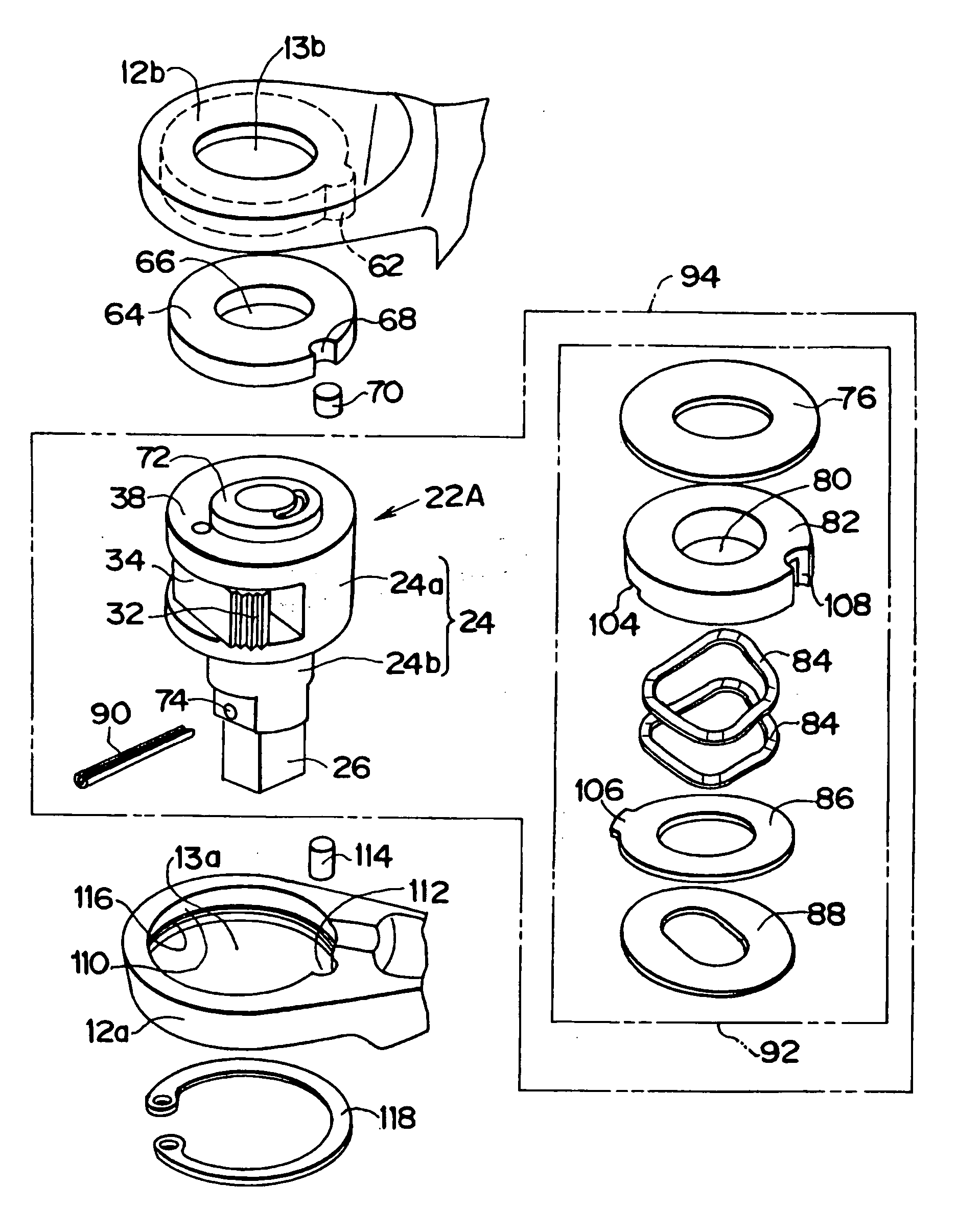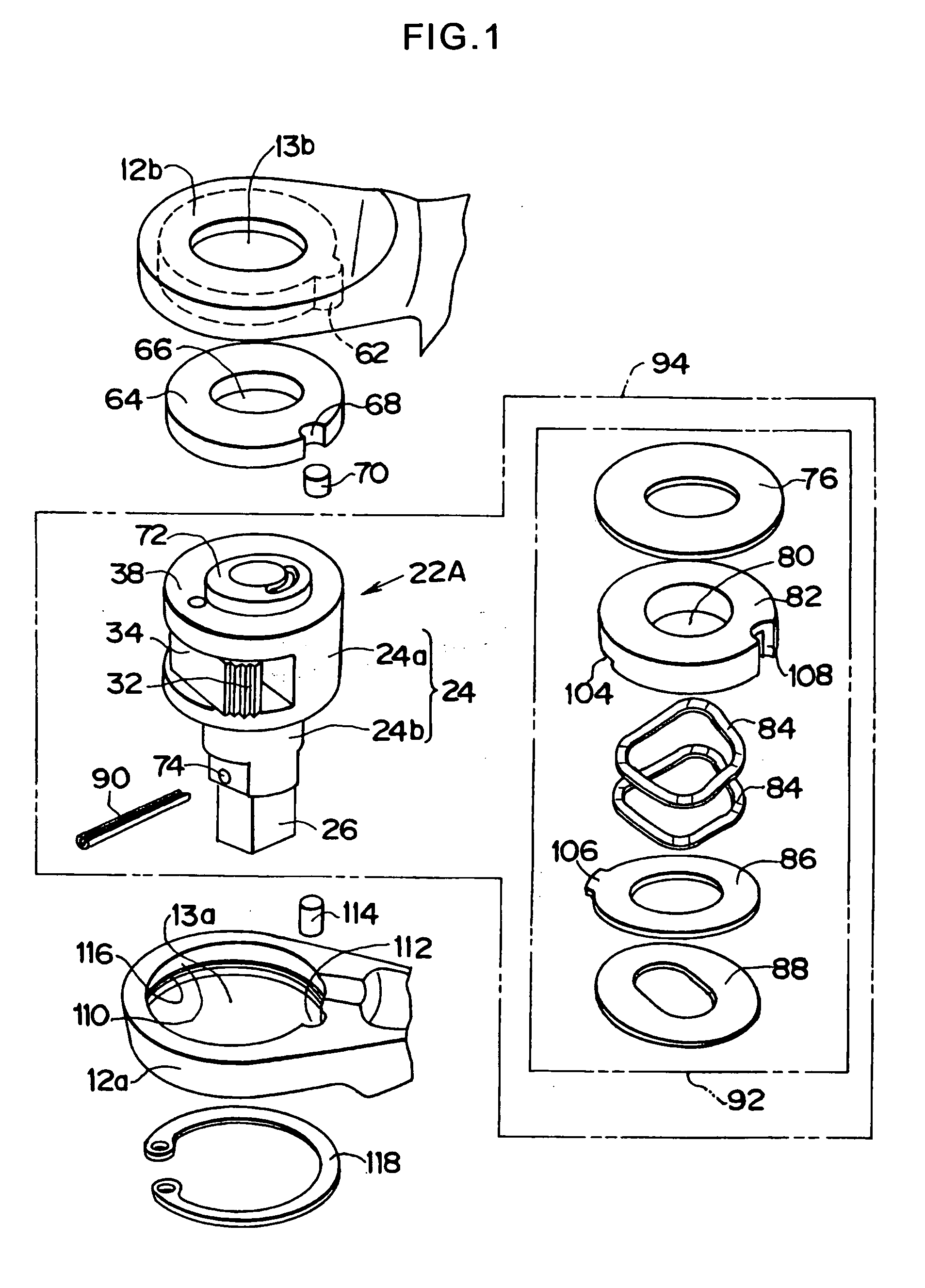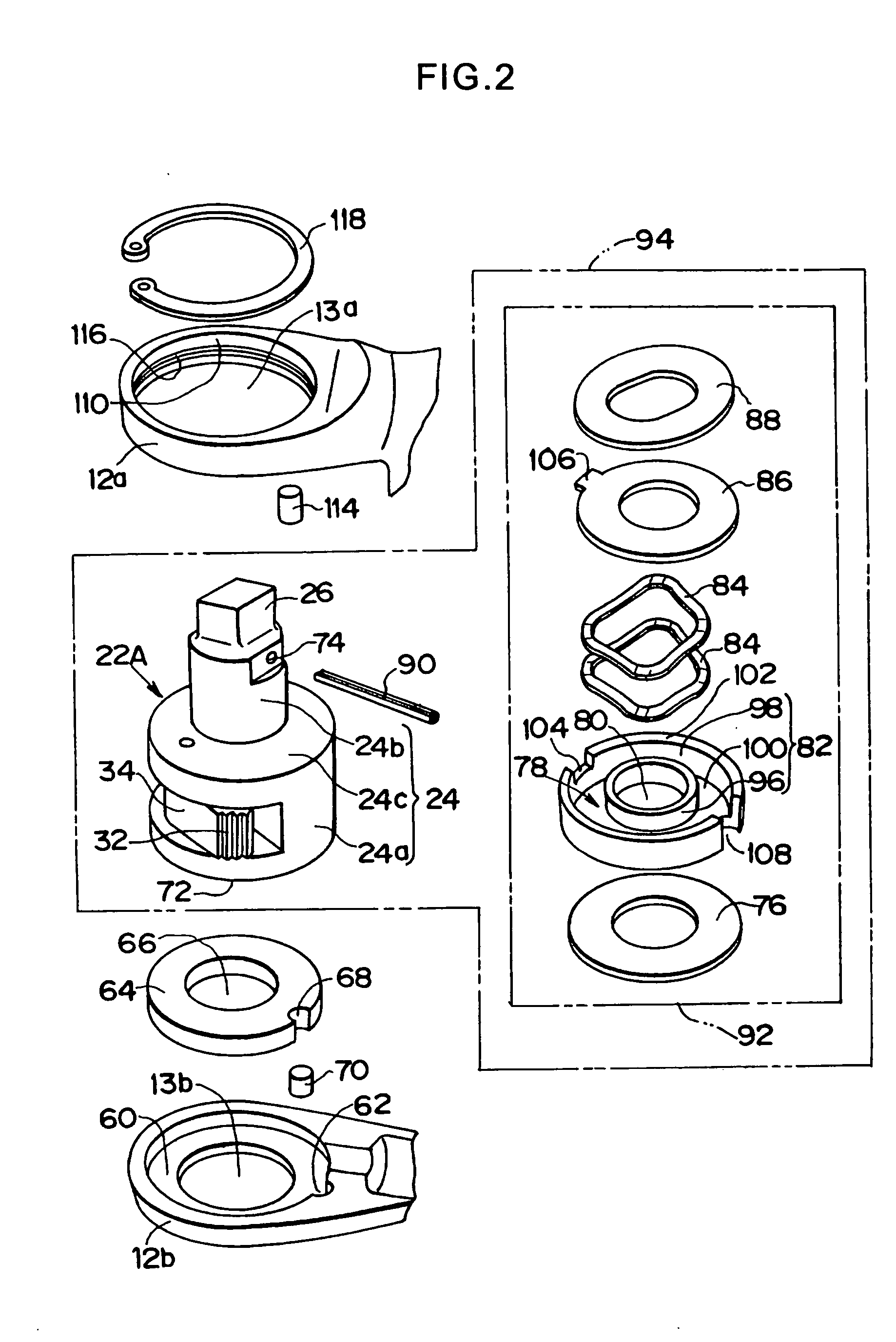Ratchet wrench and method of assembling the same
a technology of ratchet wrenches and ratchets, which is applied in the direction of wrenches, power driven tools, screwdrivers, etc., can solve the problems of torque not increasing, and torque applied to the shank b>22/b> is decreased, so as to reduce the number of working hours, the problem of torque not being applied at the start of the operation, and the effect of constant friction
- Summary
- Abstract
- Description
- Claims
- Application Information
AI Technical Summary
Benefits of technology
Problems solved by technology
Method used
Image
Examples
first embodiment
[0080]FIG. 1 is an exploded perspective view of a main part of the ratchet wrench according to the invention, FIG. 2 is an exploded perspective view when viewed from an opposite side of FIG. 1, FIG. 3 is a main-part sectional view showing a state in which the ratchet wrench of FIG. 1 and FIG. 2 is assembled, and FIG. 4 is a sectional view taken on line A-A of FIG. 3. In FIGS. 1 to 4, the same components as FIGS. 12 to 14 are designated by the same reference numerals. In a first embodiment, as-prepared material to which heat treatment such as quenching and annealing is not performed is used as a housing 10 including a first annular hold portion 12a and a second annular hold portion 12b. A first central space 13a is formed in the center of the first annular hold portion 12a, and a second central space 13b is formed in the center of the second annular hold portion 12b. An annular recess portion 60 is formed in an inner wall of the second annular hold portion 12b, and a substantially-se...
second embodiment
[0097] A second embodiment of the invention will be described below with reference to FIGS. 5 and 6.
[0098] In FIGS. 5 and 6, the same components as that shown in FIGS. 1 to 4 are designated by the same reference numerals. In the second embodiment, the material to which the heat treatment such as quenching and annealing is performed is used as the housing 10 including the first annular hold portion 12a and the second annular hold portion 12b. Since the material to which the heat treatment is performed is used as the first annular hold portion 12a and the second annular hold portion 12b, the upper surface 38 of a shank 22B may be brought into direct contact with the second annular hold portion 12b. Therefore, the second guide bush 64 used in the first embodiment will be omitted. Since the second guide bush 64 is omitted, in the shank 22B, a height of the base portion 24 is increased higher than a height of the base portion 24 of the shank 22A in order to fit to the distance between t...
third embodiment
[0100] A third embodiment of the invention will be described below with reference to FIGS. 7 to 9. In FIGS. 7 to 9, the same components as that shown in FIGS. 1 to 4 are designated by the same reference numerals. In the third embodiment, similarly to the first embodiment, the as-prepared material to which the heat treatment is not performed is used as the housing 10 including the first annular hold portion 12a and the second annular hold portion 12b. The same shank 22A as the first embodiment is used for the shank assembly 94. In the third embodiment, the shank assembly 94 is inserted from the central space 13b side of the second annular hold portion 12b toward the first annular hold portion 12a side with the engagement portion 26 in the lead.
[0101] As shown in FIG. 7, an annular recess portion 120 is formed in the inner wall of the first annular hold portion 12a, and a substantially-semi-cylindrical fitting recess portion 122 is formed at one point on the rim of the recess portion...
PUM
 Login to View More
Login to View More Abstract
Description
Claims
Application Information
 Login to View More
Login to View More - R&D
- Intellectual Property
- Life Sciences
- Materials
- Tech Scout
- Unparalleled Data Quality
- Higher Quality Content
- 60% Fewer Hallucinations
Browse by: Latest US Patents, China's latest patents, Technical Efficacy Thesaurus, Application Domain, Technology Topic, Popular Technical Reports.
© 2025 PatSnap. All rights reserved.Legal|Privacy policy|Modern Slavery Act Transparency Statement|Sitemap|About US| Contact US: help@patsnap.com



